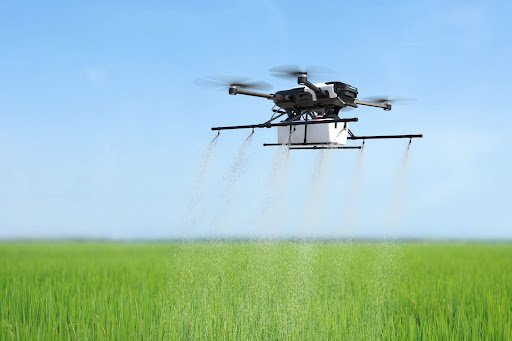Initially, venturing into outer space may have seemed unrealistic, but recently, its impact has been recognized closer to home. The orbiting technological advancements in farming, medicine, emergency response, and even simple navigation are now improving our day-to-day lives.
Equipment originally developed for use by astronauts, as well as satellites, has turned into a necessity in our modern life. We use satellites, sensors, and AI-powered platforms, which were initially intended for space, to tackle all sorts of ground issues.
Better Agriculture from Orbit
Space farming technologies and satellite imagery enable farmers to receive real-time visuals of their crops, helping them monitor plant health, detect diseases early, and plan irrigation more efficiently. The integration of precision tools and constantly updated datasets has transformed decision-making across industries — from agriculture to data-driven ecosystems like MelBet online betting, where accurate forecasting and live analytics are key to staying ahead. These innovations allow small-scale farmers in developing countries to access a level of control and insight that was previously unimaginable, improving yields while reducing water and chemical use. Similarly, humanitarian organizations now rely on satellite data to detect threats and respond before crises escalate.
Disaster Management and Climate Monitoring
Satellites aid a lot in monitoring natural disasters. They keep an eye on hurricanes and floods, as well as monitoring wildfires as they occur. This information helps bodies of authority to prepare beforehand and carry out evacuations, which greatly aids in providing help later on.
Tools from space help us study climate change deeply. Satellites keep track of the temperature of different regions in the world, levels of water sea, movement of ice on land, and emissions of carbon dioxide. Such measurements help create international climatic models, future fundamentals of policies, and tell us the condition of the Earth’s ecosystem for extended periods of time.
Sports, Navigation, and Streaming
Space technology makes sports and entertainment better. Although GPS was invented for the military and aerospace at first, it now helps with navigation on smartphones, fitness products, and sports apps. Current satellite technology helps athletes keep an eye on their quickness, route, and vital metrics.
In addition, global broadcasting depends on the use of communication satellites. Events such as the FIFA World Cup and the Olympics are sent live around the world using satellites. The speed and simplicity in accessing information are very similar to what you get with MelBet Instagram sports updates. If it weren’t for drones, TV networks could not broadcast detailed, live news from many areas without direct access to electricity or communication lines.
In aviation and shipping, space-based tracking makes routes more secure while improving how things are transported. More stability is now found in systems like farming and air traffic because of these new technological benefits.
How Space Tech Compares to Ground Systems
To illustrate the benefits of technology developed for space missions compared to technologies developed to solve terrestrial challenges, consider the following comparison:
| Application Area | Ground-Based Systems | Space-Based Systems |
| Weather Forecasting | Limited to surface stations | Global coverage with high accuracy |
| Navigation | Maps and local sensors | GPS and satellite-guided precision |
| Agriculture | Manual field inspection | Satellite imaging and AI integration |
| Disaster Response | Local observation and radio alerts | Real-time satellite mapping |
| Environmental Monitoring | Periodic measurements | Continuous global surveillance |
As the table shows, space tech offers broader coverage, higher speed, and more consistency in nearly every application.

Everyday Uses You Might Not Expect
Some impacts are more straightforward than others. To illustrate the impacts of space technology on daily life, consider the following examples:
- Medical advances: Heart monitors and water purifiers are among the numerous tools utilized in hospitals and disaster settings, which were first developed for space.
- Firefighting gear: First responders working in extreme conditions make use of heat-resistant materials developed for spacecraft.
- Food safety: NASA’s work on packaging and contamination control enhanced sterilization methods utilized in global food supply chains.
- Road safety: The use of GPS and satellite data in navigation applications improves traffic congestion in cities.
Challenges and the Path Forward
Flexibility comes with its own set of unsolved problems like privacy, access, and affordability. Although we understand the power of satellite capabilities, the information explosion does lead to a region where control gets focused redundantly over pre-existing data. The space tech sector offers limitless possibilities and comes with its share of problems.
Space technology can benefit humanity instead of regions with expensive rockets only if international collaboration through shared infrastructure is carried out. Everyone gets the ability to access open documents, but standards tend to become hidden, transforming transparent policies into something much darker. Further use of technologies opens doors for a profound understanding of our planet along alter its transformation.
It’s Closer Than You Think
Space exploration isn’t just satellites orbiting Earth or colonizing Mars; it includes lesser-known technologies, like farming satellites, that assist us in daily life. Whether the apps on your phone, including ambulances, are actively utilized or being monitored, we have satellites that provide tracking aid.
